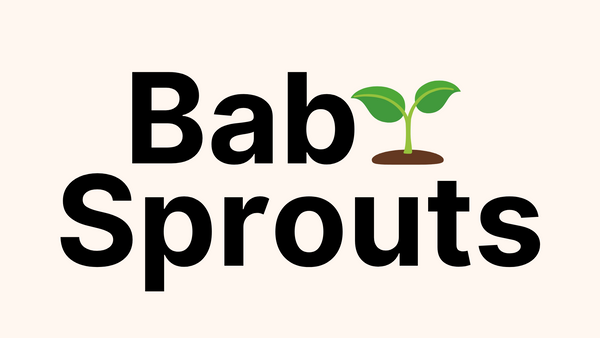
Silicone Baby Toothbrush vs Traditional: Which is Better for Your Little One?
The Rise of Silicone Toothbrushes: A New Trend in Baby Oral Care
Understanding the Popularity of Silicone Toothbrushes
Silicone baby toothbrushes have gained popularity in recent years. Parents are drawn to their soft, flexible design. These brushes are gentle on a baby's delicate gums and emerging teeth. They come in fun shapes and colors, making brushing time more enjoyable for little ones.

Many silicone toothbrushes are designed as finger brushes. This allows parents to easily control the brushing process. The material is also naturally resistant to bacteria. This feature appeals to health-conscious parents who want to keep their baby's mouth clean and germ-free.
Benefits of Silicone Toothbrushes Over Traditional Options
Silicone toothbrushes offer several advantages over traditional ones. They are often more durable and long-lasting. This makes them a cost-effective choice for parents. The soft, flexible bristles are less likely to cause irritation or discomfort.
These brushes are also easy to clean and sanitize. Many can be boiled or put in the dishwasher. This ensures a hygienic brushing experience for babies. Silicone brushes are often BPA-free and food-grade. This gives parents peace of mind about the safety of the materials.
Some silicone toothbrushes double as teething toys. This dual-purpose design can be helpful during the teething phase. Babies can safely chew on the brush to soothe sore gums. This feature may encourage them to form positive associations with oral care routines.
Evaluating the Effectiveness of Silicone Baby Toothbrushes
How Silicone Toothbrushes Clean Teeth: A Closer Look
Silicone toothbrushes clean teeth through gentle friction and massaging action. The soft bristles or nubs on the brush head can reach small crevices between teeth. They effectively remove food particles and plaque without being too abrasive on sensitive gums.

Many silicone toothbrushes have a unique texture on their surface. This helps to stimulate gums and increase blood flow. The flexible nature of silicone allows the brush to conform to the shape of the baby's mouth. This ensures a thorough clean, even in hard-to-reach areas.
Some silicone toothbrushes vibrate or have multiple cleaning surfaces. These features can enhance the cleaning process. They may help to dislodge stubborn food particles more effectively than manual brushing alone.
Comparing Efficacy: Silicone vs Traditional Baby Toothbrushes
When it comes to cleaning power, both silicone and traditional toothbrushes can be effective. Traditional brushes with nylon bristles may be better at scrubbing away tough stains. However, they can also be too harsh for a baby's delicate mouth.
Silicone brushes excel in gentleness and comfort. They're less likely to cause bleeding or irritation in sensitive mouths. This can make the brushing experience more pleasant for babies. As a result, they may be more willing to cooperate with regular brushing.
Studies have shown that silicone brushes can be as effective as traditional ones in removing plaque. However, the brushing technique and duration are crucial factors. Proper use of either type of brush can lead to good oral hygiene outcomes.
Choosing the Right Toothbrush for Your Baby: What Parents Should Know
Factors to Consider When Selecting a Toothbrush
When choosing a toothbrush for your baby, several factors come into play. The age of your child is a crucial consideration. Newborns and infants may benefit from finger brushes or very soft silicone options. Older babies and toddlers might be ready for brushes with handles.

The size of the brush head is important. It should be small enough to fit comfortably in your baby's mouth. The handle should be easy for you to grip and maneuver. Some brushes have wider bases to prevent choking hazards.
Consider your baby's teething stage. A dual-purpose brush that can soothe sore gums may be beneficial. Look for brushes made from food-grade, BPA-free materials. This ensures safety if your baby chews on the brush.
The texture of the bristles or nubs is another factor. They should be soft enough not to irritate but firm enough to clean effectively. Some babies may prefer the feel of silicone, while others might like traditional bristles.
The Role of Toothbrush Choices in Oral Hygiene for Babies
Choosing the right toothbrush is just one part of maintaining good oral hygiene for babies. Consistency in brushing is key, regardless of the type of brush used. Aim to brush your baby's teeth twice a day, using a small amount of fluoride toothpaste.
The toothbrush you choose can impact your baby's willingness to participate in oral care routines. A brush that is comfortable and fun to use may encourage better habits. This can set the foundation for lifelong good oral health practices.
Remember that toothbrushes should be replaced regularly. This is true for both silicone and traditional options. Look for signs of wear or buildup of residue. A clean, well-maintained brush is essential for effective cleaning.
Ultimately, the best toothbrush for your baby is one that you'll use consistently. Whether you choose silicone or traditional, the most important factor is establishing a regular brushing routine. Consult with your pediatric dentist for personalized advice on oral care for your little one.
By considering these factors and understanding the options available, you can make an informed choice. Both silicone and traditional toothbrushes have their merits. The right choice depends on your baby's needs and preferences. With proper use, either type can contribute to a healthy, happy smile for your little one.
